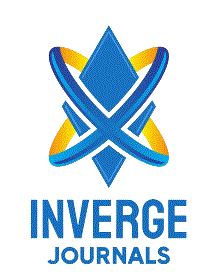Investigating the Underlying Causes and Consequences of Gender-Based Violence: Exploring Effective Intervention and Prevention Strategies in Higher Educational Institutes
DOI:
https://doi.org/10.63544/ijss.v4i1.162Keywords:
Abuse, Assault, Discrimination, Domestic Violence, Gender-Based Violence, HarassmentAbstract
Violence directed toward someone based on their gender is referred to as being gender-based violence, and is often supported due to discrimination and power imbalances in society, as well as social norms. Physical, sexual, psychological and economic violence are only some of the forms of gender-based violence. This analysis aims to explore the varieties of GBV in closer perspective and address issues of the causes and effects of GBV. It also aims to discover feasible intervention and preventative methods that Bahawalpur's higher education institutions can adopt in order to prevent gender-based violence from occurring. Gender violence or Gender-based Violence (GBV), violence is violence which is directed against a person on the basis of gender or sex. This violence can manifest in many different ways- including physical, sexual, mental, and financial abuse- and women and girls are disproportionately the primary victims. Research has shown that GBV is common and can take place in different cultural, economic, and geographic contexts. Its ramification is physical damage, mental affliction, financial difficulty and social alienation. Confronting GBV has necessitated at legal overhauls, education interventions, economic strengthening initiatives and the provision of care and support to survivors. A more holistic approach is required to combat GBV, including legal reform, educational programming, economic development programs, and services for survivors. Legal reforms are necessary to ensure perpetrators are brought to justice and victims to find justice. Education programs are a cornerstone to promoting gender equality and challenging harmful social norms and stereotypes. Economic empowerment programs are critical to enabling women and girls to become financially self-reliant and less at risk of violence. It is important to provide survivors of GBV with counselling, medical and other kind of support services so that they find ways to get over the trauma of the attack and put their lives back on track. In conclusion, GBV is an extremely serious human rights issue, affecting millions of people across the globe.
References
Ahmad, S., & Khan, R. (2023). Exploring the root causes of gender-based violence in Pakistan: A qualitative study. Journal of Social Sciences and Humanities, 62(1), 55–70. https://doi.org/10.46568/jssh.v62i1.654
Arat, Z. F. K. (2015). Feminism, women's rights, and the UN: Would achieving gender equality empower women? American Political Science Review, 109(4), 674–689. https://doi.org/10.1017/S0003055415000456
Beitz, C. R. (2009). The idea of human rights. Oxford University Press.
Bertrand, M. (2020). Gender in the twenty-first century. AEA Papers and Proceedings, 110, 1–24. https://doi.org/10.1257/pandp.20201077
Bull, A. (2024). Learning from survivors: Reporting parties' perspectives on how higher education institutions should address gender‐based violence and harassment. Higher Education Quarterly, 78(3), 1123-1137.
Connell, R. (2009). Gender (2nd ed.). Polity Press.
Dickin, S., & Gabrielsson, S. (2023). Inequalities in water, sanitation and hygiene: Challenges and opportunities for measurement and monitoring. Water Security, 20, Article 100143. https://doi.org/10.1016/j.wasec.2023.100143
Doepke, M., Tertilt, M., & Voena, A. (2012). The economics and politics of women’s rights. Annual Review of Economics, 4(1), 339–372. https://doi.org/10.1146/annurev-economics-061109-080201
Griffin, J. (2009). On human rights. Oxford University Press.
Hadi, A. (2019). Patriarchy and gender-based violence in Pakistan. Annals of Social Sciences and Perspective, 1(1), 1–12. https://assap.com.pk/index.php/assap/article/view/10
Heise, L., Ellsberg, M., & Gottmoeller, M. (2002). A global overview of gender-based violence. International Journal of Gynecology & Obstetrics, 78(Suppl. 1), S5–S14. https://doi.org/10.1016/S0020-7292(02)00038-3
Humbert, A. L., Strid, S., Tanwar, J., Lipinsky, A., & Schredl, C. (2025). The role of intersectionality and context in measuring gender-based violence in universities and research-performing organizations in Europe for the development of inclusive structural interventions. Violence against women, 31(6-7), 1688-1711.https://doi.org/10.1177/10778012241231773
Ikpeze, O. V., & Muoneke, M. C. (2023). Theories and causes of gender-based violence in Nigeria. Law and Social Justice Review, 4(1), 31–47.
Kaluyu, V. K. (2007). Causes, consequences and management strategies of gender-based domestic violence: A case of Central Division of Kitui District, Kenya [Unpublished doctoral dissertation]. Egerton University.
Karmaliani, R., Pasha, A., Hirani, S. S., Somani, R., Hirani, S., Asad, N., & McFarlane, J. (2012). Violence against women in Pakistan: Contributing factors and new interventions. Issues in Mental Health Nursing, 33(12), 820–826. https://doi.org/10.3109/01612840.2012.721458
McCloskey, L. A. (2016). The effects of gender-based violence on women’s unwanted pregnancy and abortion. The Yale Journal of Biology and Medicine, 89(2), 153–159.
Mirza, I., & Jenkins, R. (2004). Risk factors, prevalence, and treatment of anxiety and depressive disorders in Pakistan: A systematic review. BMJ, 328(7443), 794. https://doi.org/10.1136/bmj.328.7443.794
Russo, N. F., & Pirlott, A. (2006). Gender-based violence: Concepts, methods, and findings. Annals of the New York Academy of Sciences, 1087(1), 178–205. https://doi.org/10.1196/annals.1385.024
Sarfraz, A., Sarfraz, Z., Sarfraz, M., & Qarnain, Z. (2022). Gender-based violence in Pakistan and public health measures: A call to action. Bulletin of the World Health Organization, 100(7), 462–463. https://doi.org/10.2471/BLT.21.287435
Tadesse, G., Tinsae, T., Nakie, G., Rtbey, G., Andualem, F., Kelebie, M., ... & Fentahun, S. (2024). Magnitude and determinants of gender-based violence among female students in Ethiopian higher educational institutions: a systematic review and meta-analysis. Frontiers in Psychiatry, 15, 1387032. https://doi.org/10.1177/10778012241231773
Terry, G. (2007). Gender-based violence. Oxfam.
Wanjiru, Q. (2021). Causes and effects of gender-based violence: A critical literature review. Journal of Gender-Related Studies, 2(1), 43–53.
Downloads
Published
How to Cite
Issue
Section
Categories
License
Copyright (c) 2025 Dr. Nosheen Malik, Dr. Rifat Tahira, Dr. Shaista Noreen

This work is licensed under a Creative Commons Attribution-NonCommercial-ShareAlike 4.0 International License.
The work is concurrently licensed under a Creative Commons Attribution-NonCommercial-ShareAlike 4.0 International License, which permits others to share the work with an acknowledgement of the authorship and the work's original publication in this journal, while the authors retain copyright and grant the journal the right of first publication.









